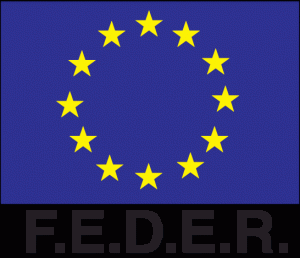METABOFLIM – Summary
A Multiplex Imaging Platform for Cellular Metabolic Profiling. Application to Cancer Diagnostics and Cytotoxic Amyloid Oligomers

The increase in the life expectancy in Europe and the rest of the developed countries has brought the upsurge in the incidence of agerelated diseases, such as neurodegenerative diseases (Alzheimers, Parkinsons…), as well as a greater occurrence of cancer. A lot of scientific efforts are in place for the development of novel diagnostics tools and imaging strategies for drug discovery, early diagnostics, and treatment efficacy monitoring. These represent the major pillars for the progress towards personalized medicine. Cancer cells undergo a reprogramming of their metabolic pathways, and recent investigations are hypothesizing the pivotal role of the specific metabo-phenotypes in tumour progression. The possibility of switching between different metabolic states is incipiently changing the paradigm of cancer cell transformation, involving groundbreaking consequences for the design of novel drugs aimed for the cell metabolism. Hence, profiling of the metabolic phenotype will help in the early diagnostics of tumoural tissue, as well as in drug discovery. Interestingly, neurodegenerative diseases also exhibit malfunctions in the mitochondria and altered metabolism, which may be related to the clinical onset of dementia. The link between amyloid, neurodegenerative diseases and dysfunctional metabolism is just in its primary stages of research, and very little is known about this link at the cellular level. Against this background, this proposal will explore the following aspects: 1) unravelling the crucial role of the metabolic reprogramming in cancer cell biology; 2) the development of a nanotechnological imaging platform for cancer diagnostics and pre-clinical drug screening; 3) obtaining key information on the amyloid oligomers causing cytotoxicity; and 4) untangling the effect of amyloid oligomers over the cell metabolism. To achieve these goals, we will exploit advanced imaging techniques, nanotechnology sensing, and ultrasensitive fluorescence detection to optimise a multiplex imaging platform, capable of performing cellular metabolic profiling. This will require the simultaneous determination of the glucose consumption rates and the intra-mitochondrial pH, to distinguish between normal oxidative phosphorylation and altered aerobic glycolysis cellular states. In order to overcome the drawbacks of all the previous imaging methods for intracellular sensing, we will take advantage of advanced, multidimensional fluorescence lifetime imaging microscopy (FLIM), and longlifetime, quantum dot-based nanosensors, designed to respond specifically to the aimed analytes inside live cells. This proposal has the potential to give new, important biological insights into two major health problems in Western societies: cancer cell function, diagnostics, amyloid oligomers cytotoxicity, and the connection between neurodegenerative diseases and metabolism dysfunction.
The project CTQ2014–56370-R is funded by the Spanish Ministry of Economy and Competitiveness and the European Regional Development Fund (ERDF).


